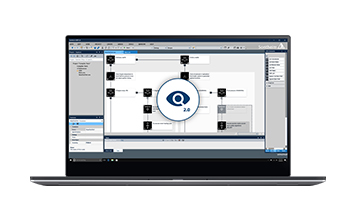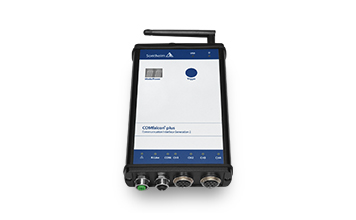Key Features
- User-defined measurements setups with graphic elements and Drag and Drop
- Receive, editing, send and abstract raw data
- J1939 and CANopen protocol support
- Modular design with expansion options
- Import and export from signal databases
Description
CANexplorer 4 is a completely newly developed fieldbus analysis software with a significantly extended range of functions and considerably improved handling. The advanced modular concept opens up completely new possibilities for analysis and data recording of the entire CAN bus data transfer. During the development of the software, special emphasis was placed on intuitive handling, a wide range of functions and flexible application capabilities. For this purpose a protocol processing is implemented, which allows an interpretation according to CANopen and J1939. Further protocols can be added easily via update.
Measurement setups are created quickly and clearly by drag and drop and are also displayed in a project tree. The new CANexplorer provides 4 different elements for processing CAN data, such as classic text-based traces, graphs, bar graphs, LEDs, filters and triggers. Of course, multithreaded support for parallel operation alongside other applications and visualization with different function modules is also implemented at the same time.
Data processing
CANexplorer 4 offers various functions to process CAN data. In addition to the classic text-based traces, messages can be defined as signals and displayed in bar graphs, speedometers, LEDs, graphs and text.
The creation of a measurement setup is done by an intuitive graphical connection via drag and drop of the individual function modules. Thus even complex processes can be displayed visually in a simple and comprehensible way.
Visualization
By using triggers and filters, the data visualization can be customized. The new CANexplorer additionally enables interactive participation in bus traffic by generating and sending messages. Processing is either manual, fully automatic or triggered by a trigger.
Data abstraction
In addition, integrated protocol processing enables automatic interpretation according to CANopen and J1939. The CAN data is then directly available as pre-processed readable information. Further protocol stacks can be added with updates. For all proprietary protocols and raw CAN data the integrated manual symbol editor can be used to define symbols.
Parallel operation
With its multithread support, CANexplorer 4 allows parallel operation alongside other applications on a PC and visualization with different function modules at the same time.
Technical Data
| Transmission/reception of CAN messages | Signal generator with different signals (sine, sawtooth, square, counter) Manual transmission of definable CAN messages Cyclic transmission of definable CAN messages Block transmission |
| Filter | CANexplorer 4 supports filtering by identifiers, data bytes, symbols and message types |
| Trigger | CANexplorer 4 uses both pre and post triggers |
| Signal databases | Storage of messages in a database and visualization using text and graphic elements for easy handling editor for generating and processing signals (message, multiplexer, key, groups and signal) Various data types are supported for both data import and export |
| Visualization | Trace, graph, bar-graph, speedometer, symbol monitor |
| Data processing | Writing in log-data, replay-mode |
| Protocol support | Raw CAN, CANopen, J1939, implementation of proprietary protocols on request |
| Bus Statistic | Overview of sent and received messages, bus load, CAN level |
| Quick Trace | Fast monitoring of the CAN channels without prior creation of a measurement setup |
| Operating system | Windows 2000 SP4, XP, Vista (32-bit), 7, 8, 10 |
| CPU | 1,6 GHz Intel Pentium |
| Working memory | 512 MB |
| Graphic card | 1024×768, 16 Mio. colors |
| Required hard disk space | at least 80 MB |
| Supported CAN Hardware | COMfalcon®, CANUSB, CANfox®, CANUSBlight PowerCAN-PCI V1 und V2, PowerCAN-PC104+, PowerCAN-PCI104 V2 Further CAN hardware support available on request |
Related Products

MDT® 2.0
Modular authoring system for the creation of complex diagnostic applications in the automotive sector. Based on ODX and OTX standard and an MCD-3D server.
- ODX support according to ISO 22901-1
- OTX support according to ISO 13209
- MCD-3D Server
- Platform independent

VCIs
High-performance Vehicle Communication Interfaces for development, production and service applications in the automotive sector.
- Up to 6× CAN interface
- WLAN, LAN, Bluetooth, USB, ...
- LIN, RS232, RS485, ...
- With logging function

CLCM 2.0
The latest generation of the Communication Lifecycle Manager enables the entire vehicle data management based on ODX in just one tool.
- Mgmt. of all fieldbus-based data
- Web-based tool
- ODX 2.2.0 support according to ISO 22901-1
- Automatic code generation


